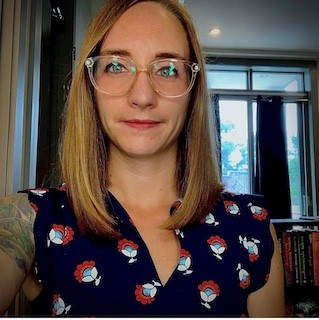The COVID-19 pandemic changed many people’s lives, but those working with substance use disorder patients and behavioral health were particularly impacted. How can one treat a patient without having them come into the office? Or have group sessions without a group?

A small clinic in New York City moved quickly from in-person treatment to telemedicine, and its quick response and success were featured in a recent PCSS Clinical Roundtable, Lessons Learned in Adapting Psychosocial Services for SUDs Treatment from the Epicenter of a Pandemic. The presentation was given by Ariel Hurley, LMSSW, MPH of New York State Psychiatric Institute. Hurley is a substance use disorder clinician for the clinic and also works as a technology transfer specialist for the Opioid Response Network.
Observing the quick surge of COVID-19 cases in the city, the clinic anticipated a move toward telemedicine, seeing its last patient in person March 18—four days before the state declared “New York on Pause.” By March 23, the clinic had transitioned entirely to telemedicine. Not only was it important to get the clinicians on board—some were less than computer savvy—but also patients. Zoom tutorials ensued. All patients had to be contacted, their access to the internet assessed, their information brought up to date. It was a massive undertaking that translated to late nights and dozens of phone calls.
“It was awe-inspiring how quickly everyone sprang into action,” Ariel said. “This was an all-hands-on-deck moment, and it felt like everyone on staff, from the front desk to medical, rose to the occasion. We have always emphasized a collaborative, team-based approach to care, and it was incredible to see this dynamic persist in such a challenging and unique situation.”
Meanwhile, the clinic staff had to determine how to transition its services all to online, how to make certain their patients, who are particularly vulnerable, continued to be treated. They had as many questions as answers, such as: If there is a shelter in place, will someone be able to attend a medical appointment for their addiction treatment? How do we continue to get medications to people who are homeless and living on the streets? What do we do if there is a medication shortage?
Many clinics around the state were struggling, but this clinic did not. They all faced the same barriers to care, such as computer literacy, access to technology, changing staff hours. What did this small clinic do that others had not?
The key seems to be preparation. There was some fear and anticipation, not only about transitioning to telemedicine but the pandemic itself. When the decision to move toward telemedicine was made, a plan was already in place. It wasn’t a completely smooth process, Hurley notes, but the clinic where she works had better success than many others.
Some patients were concerned that group therapy would not be as productive online. It was important to maintain groups, to get people to attend and to address their concerns. Clinicians had to make sure all participants had headphones and private space. Since they were at home, some didn’t feel comfortable speaking out loud, so clinicians allowed those folks to make comments in the chat box. They also learned that small groups of 10 participants worked best.
Patient retention actually increased at the height of the pandemic. In Hurley’s Clinical Roundtable discussion she outlined the reasons she believes their clinic was so successful in their transition to telemedicine, which continues today:
- Strong team-based approach between coordinators, clinicians, and medical staff
- Masters level clinicians (LMSW, LMHC)
- Medical stabilization model with holistic approach to psychosocial care
- “All hands on deck” approach
- Utilization of nurse care manager model
- Always follow up with no-shows
“As clinicians, we always strive to meet our patients where they are at, both literally and figuratively,” Ariel said. “Although the pandemic brought on a deluge of unanticipated barriers to providing care, I truly believe this is the standard we continue to aspire to achieve, even in the face of adversity.”
View more upcoming PCSS Clinical Roundtables.

